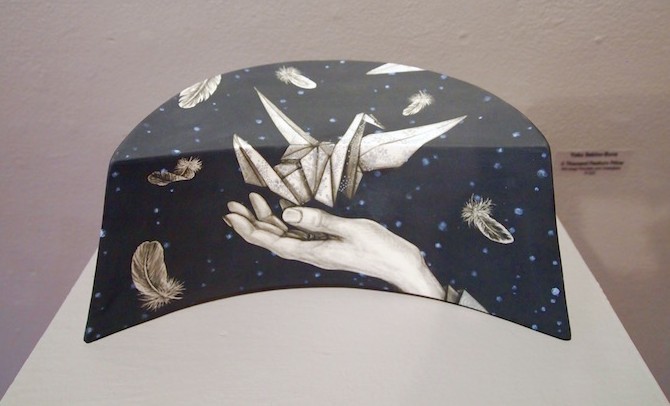Rebecca Juliette enjoys a Curator’s Tour of 道 Michi: Distinctive Paths, Shared Affinity at Baltimore Clayworks.
A cold, bitter winter rain was pouring down from the sky the day of the curator’s walk-through for 道 Michi: Distinctive Paths, Shared Affinity (Michi can be translated as “road” or “path”) at Baltimore Clayworks. The weather outside was in stark contrast to the journey of the art inside – a trial by fire – that produced a wide range of work from delicate to robust. No matter the contrasting forms of works on display, they, like the artists that made them, all took similar roads to reach their destination.
道 Michi was curated by Yoshi Fujii and Juliane Shibata. Their goal as curators was to assemble kiln creations from Japanese and Japanese-American artists to explore how their common heritage is expressed in their art. From emerging to established artisan, from fine to coarse construction, commonalities run deeper than simply a shared clay medium.
 Shoji Satake + Mika Negishi Laidlaw + Shoko Teruyama
Shoji Satake + Mika Negishi Laidlaw + Shoko Teruyama
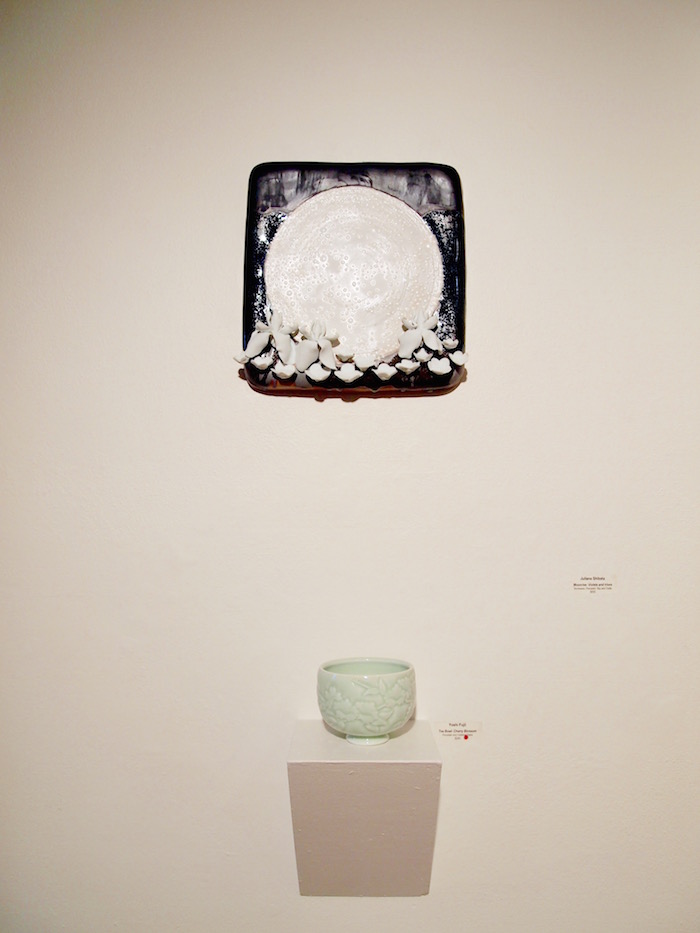 Juliane Shibata “Moonrise: Violets and Irises” + Yoshii Fuji Tea Bowl – “Cherry Blossom”
Juliane Shibata “Moonrise: Violets and Irises” + Yoshii Fuji Tea Bowl – “Cherry Blossom”
I had the fortune of being the only person who braved the miserable weather that day and was treated to a private tour of the exhibit with Yoshi Fujii and Mary Cloonan. Cloonan was responsible for the layout of the show. And both were understandably proud of what they put together. When it wraps up in Baltimore, their show will be traveling to Kansas City to be displayed at the National Council on Education for the Ceramic Arts conference, now in its 50th year.
Fujii and Shibata brainstormed about the show as the 70th anniversary of World War II approached in 2015. It took them about two years to put together a list of artists and gather their work. More than half of the participants in the show are also involved in academia and are respected names in their fields. The techniques used run the gamut from sgraffito to slip casting. There are elegant enamels set in studio kilns and vases that bear the scars of falling ash from wood-fired ovens.
With so much variety, it was hard to pick favorites, and each artist could be highlighted and their contributions discussed in detail. I mention a few favorites below, but I urge you to see the show and decide for yourself.
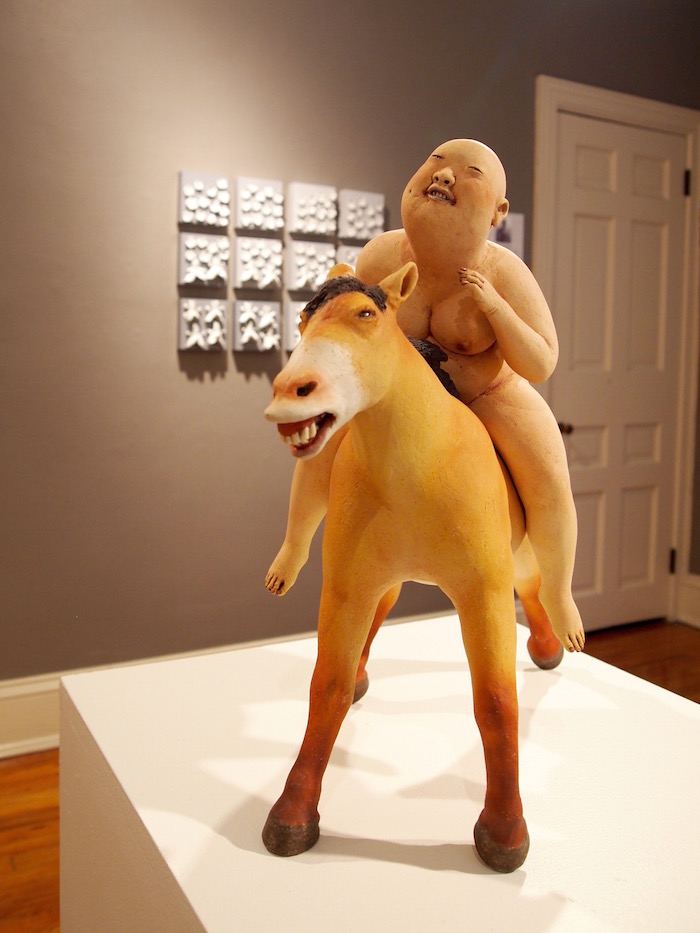 Esther Shimazu “Away We Go”
Esther Shimazu “Away We Go”
The figures lovingly crafted by Esther Shimazu were a standout. Her stoneware figures were evocative and interesting, with lifelike expressions captured both on her and equine subjects. Also noteworthy were the wood-fired vessels of Hiroshi Ogawa and Shumpei Yamaki. The effects of the ‘non-sterile’ environment of the wood kiln, with marks from ash and crackles in the glaze dramatically evoke the natural balance between chaos and order.
There were several artists in the show whose work spoke directly to traditional Japanese forms. Fujii, for example, embossed cherry blossoms (the national flower of Japan) on his work. Shibata hand formed irises and violets in homage to her grandmothers, one Japanese and one American. Ayumi Horie used a thousand year old technique called Mishima inlay to create designs on her porcelain “Rabbit Jar” and Birds Bowl.” Yoko Sekino-Bove painstakingly hand-painted scenes onto porcelain “pillows” that traditionally women sleep upon to preserve their hair styles. And Hiroe Hanazono contributed exceptionally crafted and functional tableware , like “Brunch Set” complete with a chopstick holder/bud vase combo.
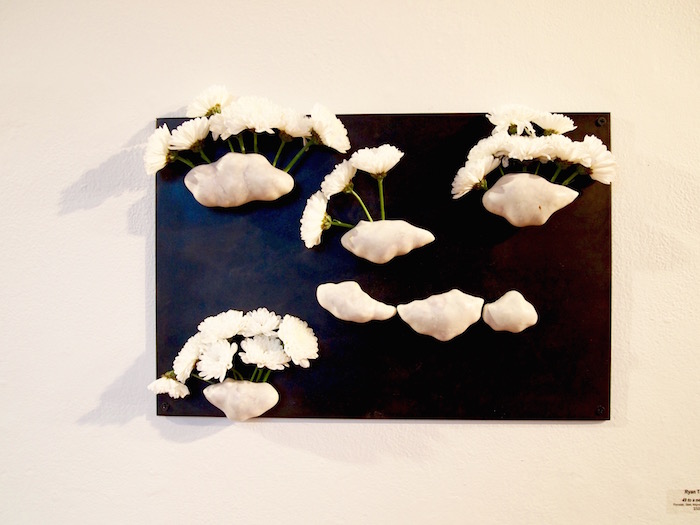 Ryan Takaba “49 to a new (drift)”
Ryan Takaba “49 to a new (drift)”
Perhaps the piece that seemed to most capture the essence of the show was Ryan Takaba’s “49 to a new (drift).” The work is composed of several small porcelain “stones” affixed by magnets to a black background. It is a comment on the Buddhist funeral ceremony that traditionally lasts 49 days, which is believed to mark the period between death and rebirth. On the first day, the small stones are clustered close together. But on each subsequent day, either Fujii or Cloonan move them further apart. A single chrysanthemum is also placed inside daily to mark the passage of time toward the 49th day. As time stretches on, the piece stretches out.
One thing that is consistent in all of the ceramics in the show is that the process of firing them is a great gamble. Once the pieces go into the fire, there is no guarantee that they will come out intact, and no guarantee that if they do, they will appear as the maker originally intended. The time taken to shape the clay and plan each step in the process can all (almost literally) go up in smoke when they are put into the kiln – structures can collapse and crack, glazes can be temperamental. It takes a lot of patience and trust, both in self and in the unknown, to produce these treasures.
Fujii and Shibata have curated a warm and inviting exhibit that honors traditional Japanese artwork while highlighting the journey to a hybrid, Japanese and American form. They are true to their goal of curating a show that illustrates how each artist shares the common thread of their ancestry, no matter what their style or chosen approach to the clay.
道 Michi: Distinctive Paths, Shared Affinity will be on display until March 5th. There are two more curator’s walk-through scheduled for Wednesday, March 2nd at 8:30am and Thursday, March 3rd at 6pm. It is a great opportunity to get to know more about the exhibit first hand.
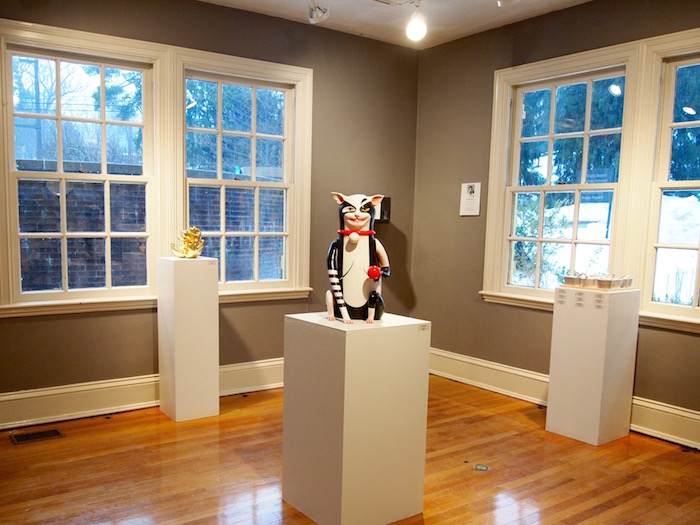
While you are there, check out Huang Hung Yu’s show in the Solo Gallery. Wood fired ceramics by students from Towson University, Morgan State University, Coppin State University and Community College of Baltimore County is up in the Project Space. And Man Alive Lane Treatment Center, which features artwork created at the addiction recovery and behavioral health center can be seen in the Imagination Lab.
Baltimore Clayworks also offers classes and events. Find out more when you visit.
Author Rebecca Juliette is an Assistant Editor at BmoreArt. She spends her free time deciding whether to knit OR crochet and usually ends up playing the tiny banjo.
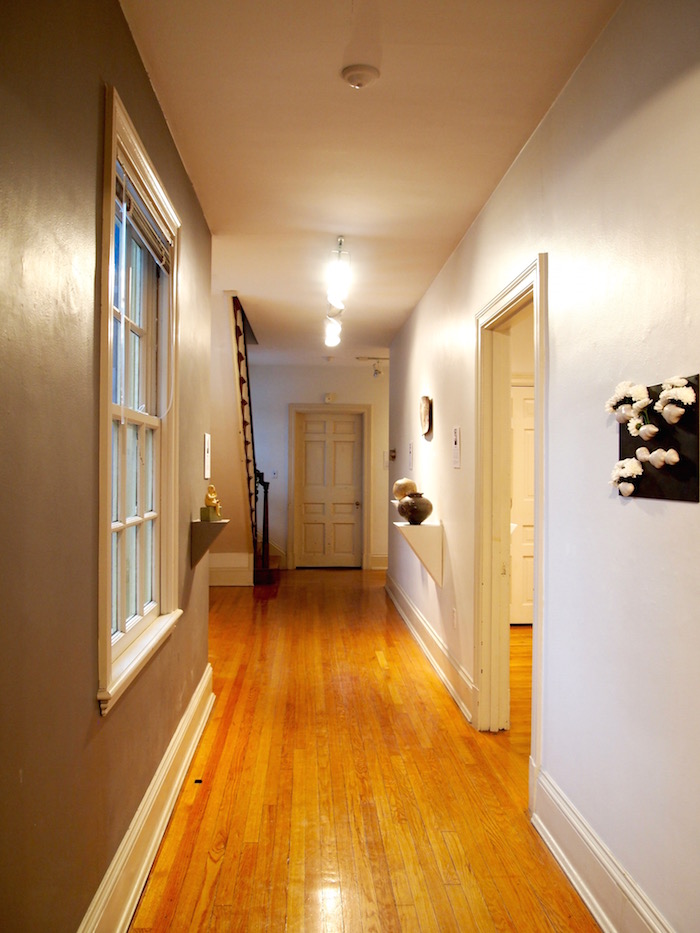
 Hiroshi Ogawa “Ichirin-Zashi Vase”, “Platter” + Shumpei Yamaki “Jar”
Hiroshi Ogawa “Ichirin-Zashi Vase”, “Platter” + Shumpei Yamaki “Jar”
 Esther Shimazu “As an Aside”
Esther Shimazu “As an Aside”
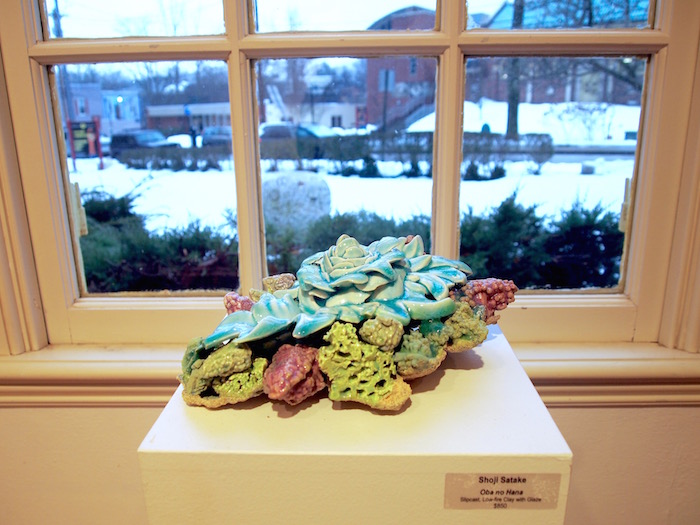 Shoji Satake “Oba no Hana”
Shoji Satake “Oba no Hana”
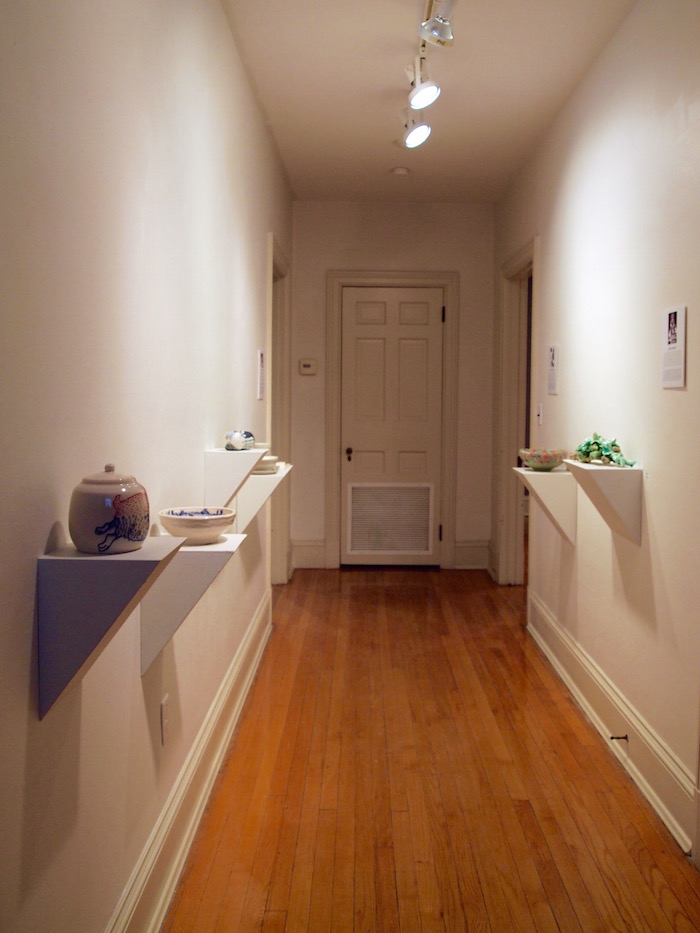
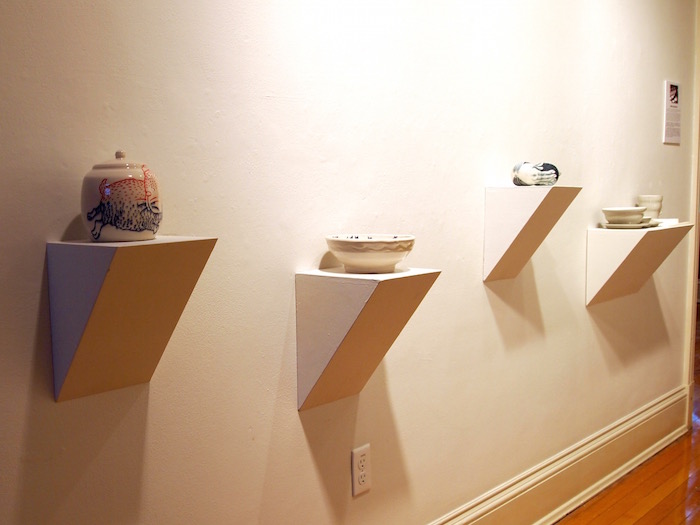
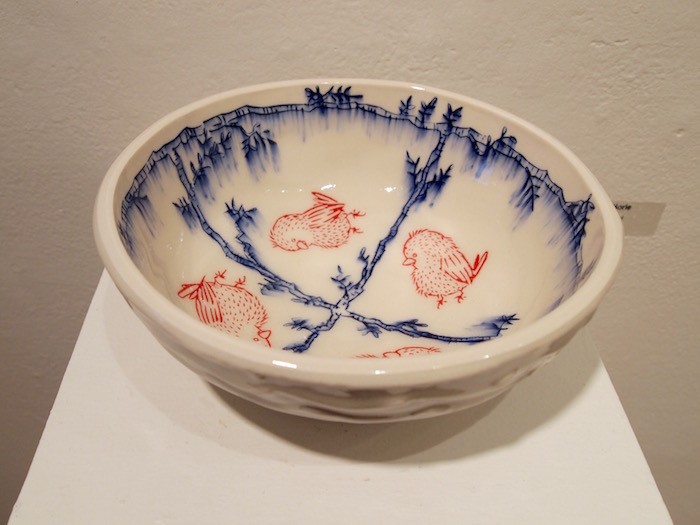 Ayumi Horie “Birds Bowl”
Ayumi Horie “Birds Bowl”
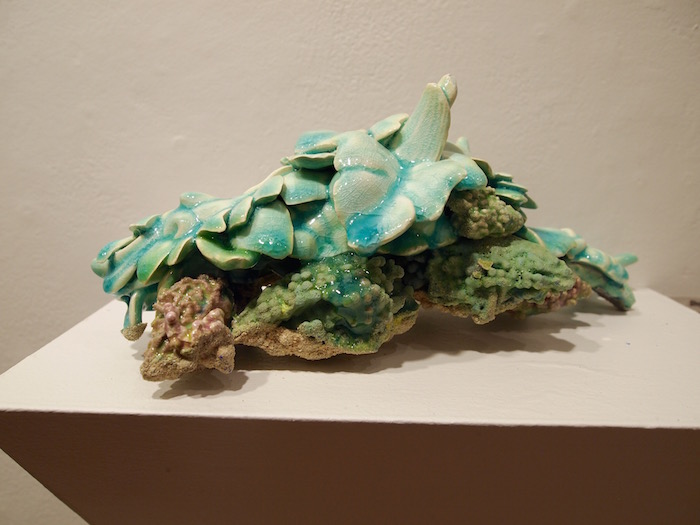 Shoji Satake “Otoko”
Shoji Satake “Otoko”
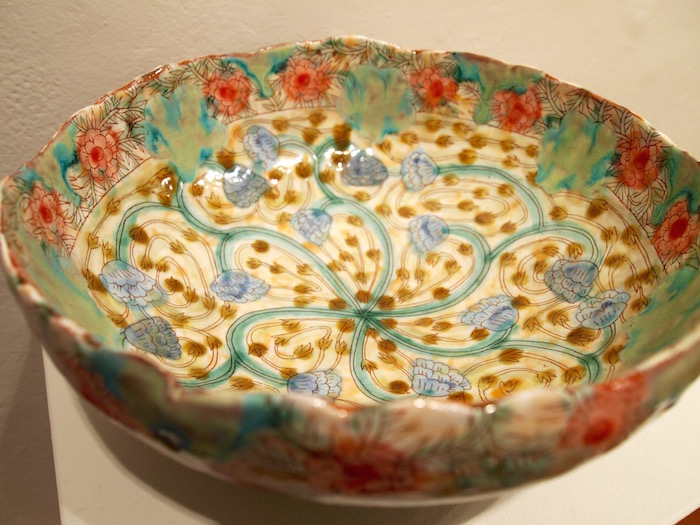 Shoko Teruyama “Bowl”
Shoko Teruyama “Bowl”
 Ayumi Horie
Ayumi Horie
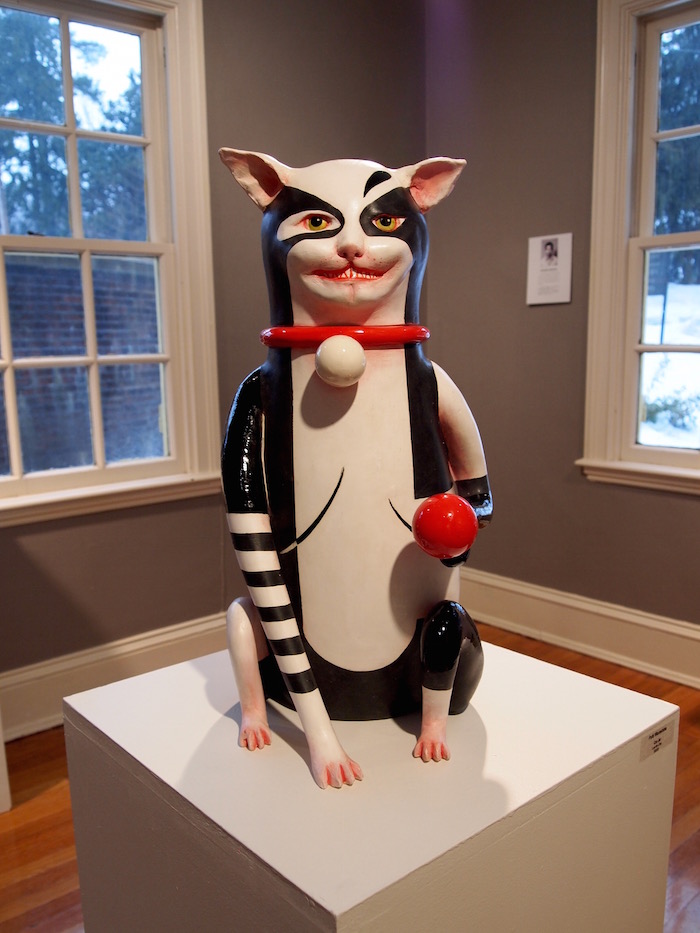 Patti Warashina “Cat Jar”
Patti Warashina “Cat Jar”
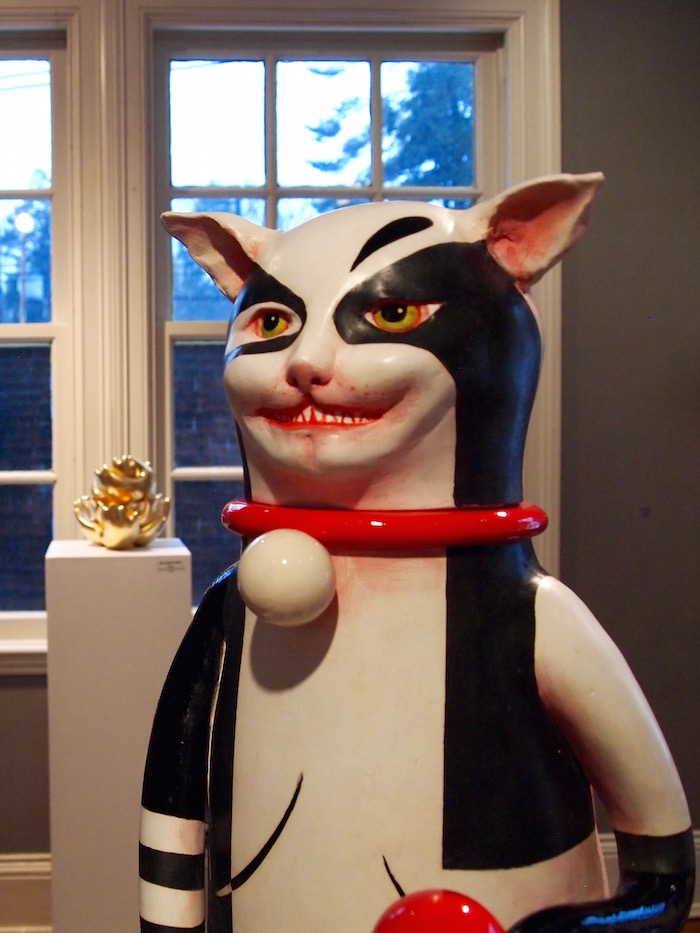 Patti Warashina “Cat Jar”
Patti Warashina “Cat Jar”
 Yoshi Fujii “Serving Platter – Cherry Blossom” + Yoko Sekino-Bove “A Thousand Feathers Pillow”
Yoshi Fujii “Serving Platter – Cherry Blossom” + Yoko Sekino-Bove “A Thousand Feathers Pillow”
 Yoko Sekino-Bove “A Thousand Feathers Pillow”
Yoko Sekino-Bove “A Thousand Feathers Pillow”
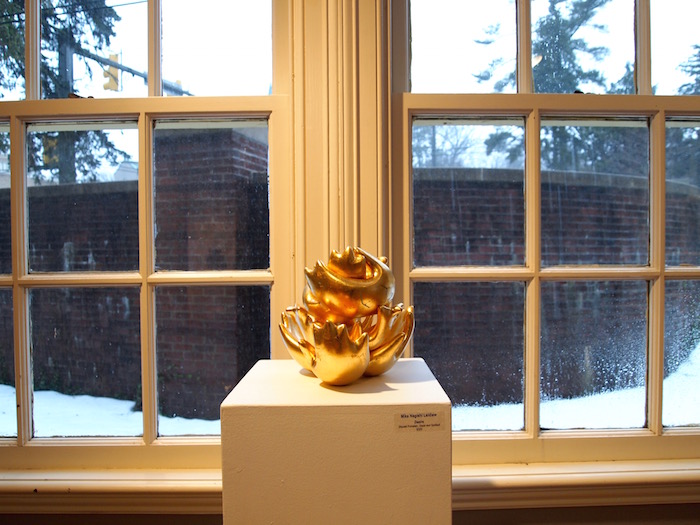 Mika Negishi Laidlaw “Desire”
Mika Negishi Laidlaw “Desire”
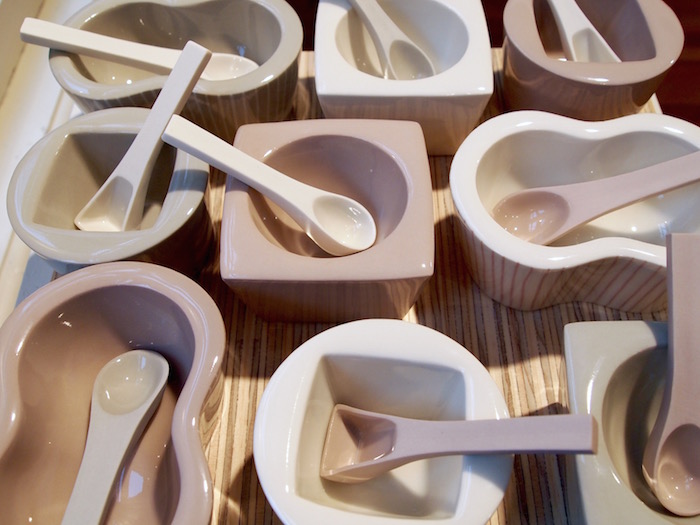 Hiroe Hanzono “Condiment Set”
Hiroe Hanzono “Condiment Set”
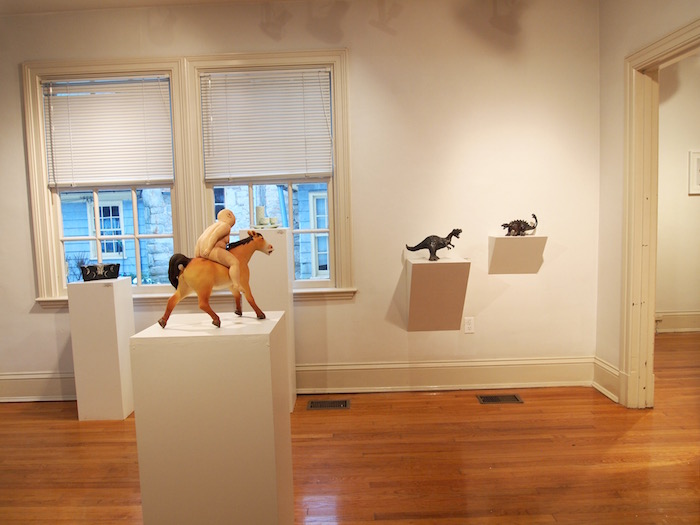
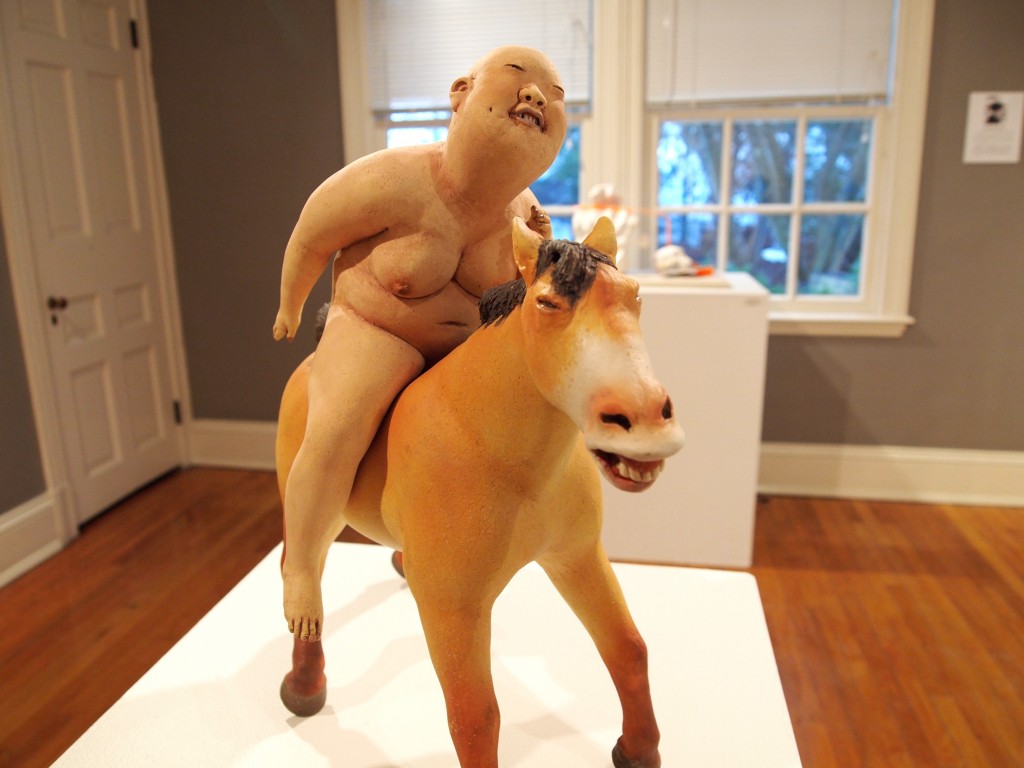 Esther Shimazu “Away We Go”
Esther Shimazu “Away We Go”
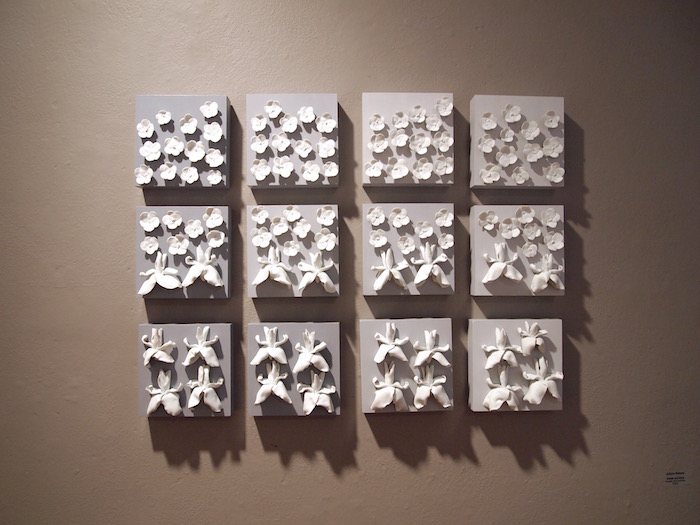 Juliane Shibata “Violets and Irises”
Juliane Shibata “Violets and Irises”
 Yoko Sekino-Bove “Moon Cycle Pillow”
Yoko Sekino-Bove “Moon Cycle Pillow”
 Yoshi Fujii “Sake Set with Tray”
Yoshi Fujii “Sake Set with Tray”
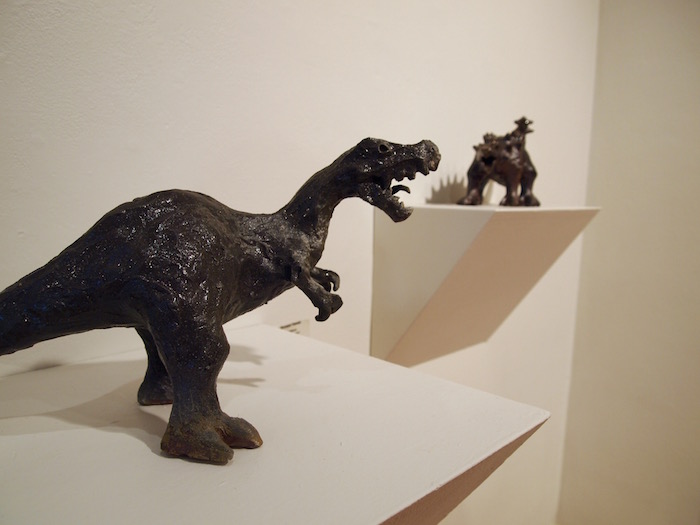 Shumpei Yamaki “Allosaurus”, “Ankylosaurus”
Shumpei Yamaki “Allosaurus”, “Ankylosaurus”
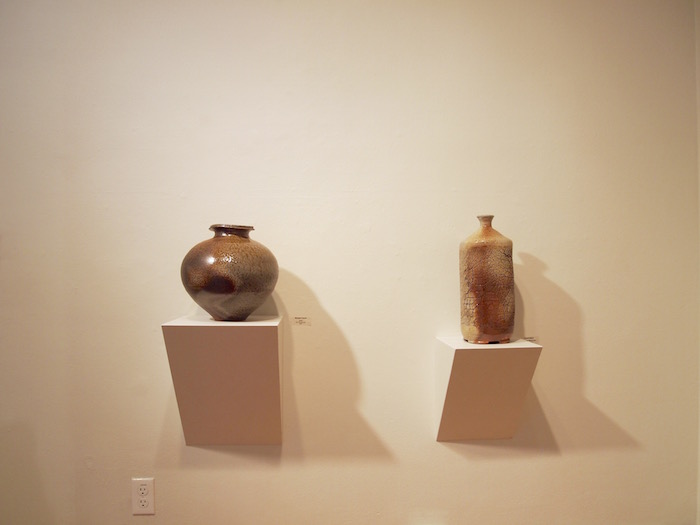 Shumpei Yamaki “Jar” + Hiroshi Ogawa “Textured, Altered Vase”
Shumpei Yamaki “Jar” + Hiroshi Ogawa “Textured, Altered Vase”
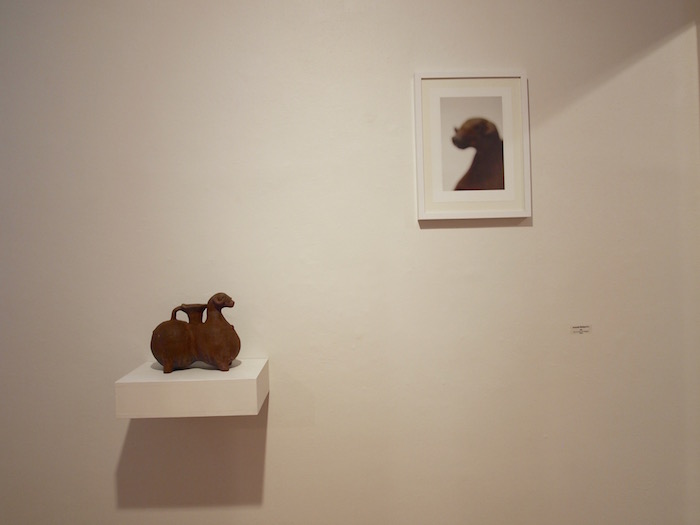 Nobuhito Nishigawara “#9”
Nobuhito Nishigawara “#9”
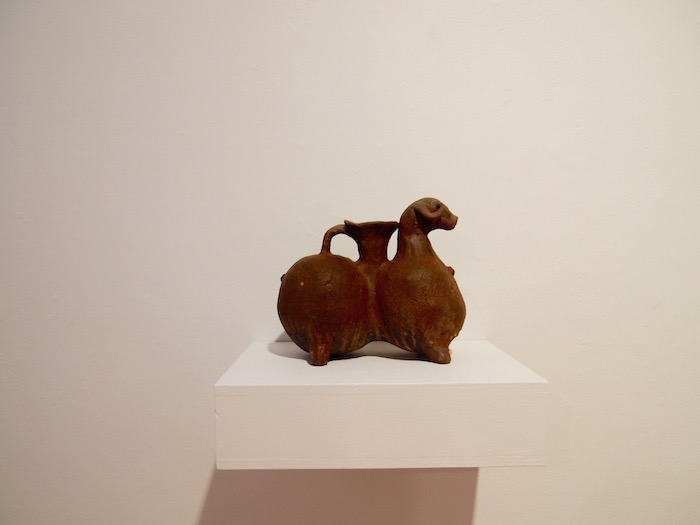 Nobuhito Nishigawara “#9”
Nobuhito Nishigawara “#9”
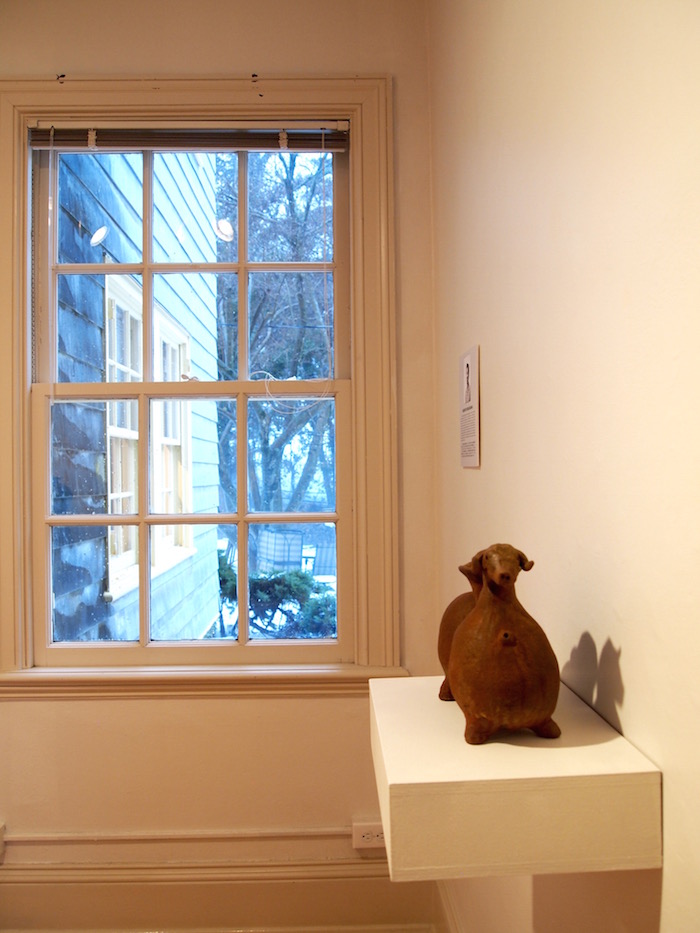 Nobuhito Nishigawara “#9”
Nobuhito Nishigawara “#9”


